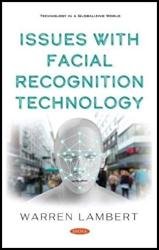 Название: Issues With Facial Recognition Technology
Название: Issues With Facial Recognition TechnologyАвтор: Warren Lambert
Издательство: Nova Science Publishers
Год: 2021
Страниц: 232
Язык: английский
Формат: pdf (true)
Размер: 11.7 MB
Automated facial recognition systems compare two or more images of faces to determine whether they represent the same individual. Facial recognition technology (FRT) falls within the larger categories of biometric technology used to varying degrees by the government and private entities to identify persons. This book deals with some of the issues concerning facial recognition technology.
Biometric technology uses automated processes to identify an individual through unique physical characteristics, such a fingerprints, speech patterns, or facial features. FRT can perform several functions, with the most common being face identification - the comparison of an unknown person’s face against a gallery of known persons - and face verification—confirmation of someone’s claimed identity. When an image of an unknown person is compared to a database, the technology may determine that an image in the database is sufficiently similar to register as a likely match. One or more likely matches may be identified.If no images are found to be sufficiently similar, the system will return no matches. Face identification can be used for surveillance, to find a person of interest, or for the identification of subjects who are either unable or unwilling to respond. Verification can confirm an individual’s claimed identity by comparing a current image with a database of images to determine whether the images match.
Many face recognition algorithms determine which facial features matter most through training. During training, an algorithm is given pairs of face images of the same person. Over time, the algorithm learns to pay more attention to the features that most reliably signaled that the two images contained the same person.
Data security. Facial image data sets raise the same security concerns as those associated with any personal data—for example, they could be subject to data breaches, resulting in sensitive biometric data being revealed to unauthorized entities. Because a person’s face is unique, permanent, and therefore irrevocable, a breach involving data derived from a face may have more serious consequences than the breach of other information, such as passwords, which can be changed.
Скачать Issues With Facial Recognition Technology